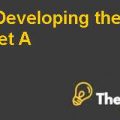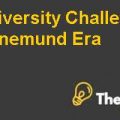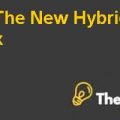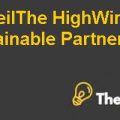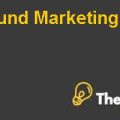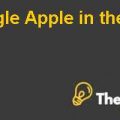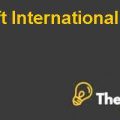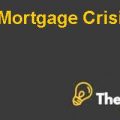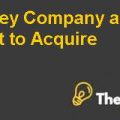The Carlyle Group: IPO of a Publicly Traded Private Equity Firm The Case Solution
Cost of Compliance
Since the firm have just filed for the IPO, there are certain requirements of the stock exchange that it has to comply like auditing of its records, but it will require the firm to pay a huge amount to do so, this will definitely affect the profitability of the company and would increase cost of purchasing shares of the company.
Answer of Question 4
Credit Suisse (CS) analyst once stated that “a dollar of cash in a unit holder’s pocket is a dollar of cash – regardless where it came from”, from this statement he meant that the cash generated from the performance fee is not different from the cash generated from the management fee and to justify this she gave the example as stated above.For the calculation of distributed earning (DE), the distributed earning would be the total of the performance fee added to management fee and the net amount of the commission paid to the management. Because of this reason it is said that the earnings resulting out of any operation, no matter by which are for the owner as far as they are no legal belongs to the shareholders.
Answer of Question 5
a)Market’s Implied Multiple
APOLLO: On 1st March 2012, Apollo recorded the price of $12.63 per share and 6.9 times as price (P)attributable earning (DE) ratio, implied that buyers would be willingly paying 6.9 for every $1 earning. By dividing price to equity ratio we get DE i.e., distributed earning and in this case it is $1.83.
BLACSTONE: On 1st March 2012, it recorded the price of $13.62 per share and 13.3 times as price to DE ratio, implied that buyers would be willingly paying $13.3 for every $1 earning. By dividing price to equity ratio we get DE i.e., distributed earning and in this case it is $1.02.
KKR: On 1st March 2012, it recorded the price of $14.15 per share and 13.9 times as price to DE ratio, implied that buyers would be willingly paying $13.9 for every $1 earning. By dividing price to equity ratio we get DE i.e., distributed earning and in this case it is $1.02.
b)Resulting Price/2012 DE Multiple and Implied Price for Carlyle
The firm’s price are always effected by economics conditions. As per fiscal year 2012 economic conditions, there are three possibilities that could affect the DE per unit after tax. In case of good economic conditions, it is expected to be $2.42, In case of poor economic conditions, it is expected to be $1.90 and in case of average economic conditions, it is expected to be $2.16.
Besides that, multiplying expected DE per unit after tax i.e. 2.16 to price to DE ratio we will get the price, D/E ratio of KKR will be used because it is also not mentioned and KKR is the most suitable to do so, by implying all of this we get estimated price of $30.02 i.e. (2.16*13.9).
In case of $10 billion-investment per year for the period of 5 years there will be 1.5% fee and expenses and 8% preferred return. The gross return equals two times of capital investment i.e., $20 billion. $750 is calculated as fee for the return, and $4 billion as preferred return per year. The preferred return is 80% of total return i.e. $4,000 and the 20% catch up of $1,000. $18,750 is LP at the end of holding period. If discounted at 15% it will give $125,000.
Company’s PPE could be calculating using different ways to sum the management fee. From the balance sheet value of GP Investments is $411. The carrying value calculated is $143,667 with $1,169 value for accrued performance. Carlyle group combined estimate PPE value is $145,247.
c)Limitations for Using DE Multiple Approach
There are two limitations for using DE multiples which are
- Same probability for each economic possibility will be used in this case because they are not explained briefly in the case.
- To calculate the price, price to D/E was used but in this case the D/E ratio was not mentioned so D/E ratio of KKR was used instead because of its similar aspects in the case.
Conclusion
From the investor point of view buying the shares of company at the rate $24 does not seem to be a good idea because of the historical events as the peers who also went public are trading at allow price than their per share prices in their IPOs , except KKR, so there is a risk in such investment. As discussed above only one out of five companies that previously went public i.e. KKR is traded above its original issue price. Currently it is being traded at $30. But the main reason behind this is that its original price was very low whereas other firms per share issuance price were very high. The company also has a higher dividend payout ratio i.e. around 80% which is a good appealing point for the investors. Although the shareholders are not given much of a significance in voting or decision making of the firm. It is decided to float the shares at $30 but that is not feasible price for the investors to invest in the firm.......................
The Carlyle Group IPO of a Publicly Traded Private Equity Firm The Case Solution
This is just a sample partial case solution. Please place the order on the website to order your own originally done case solution.

